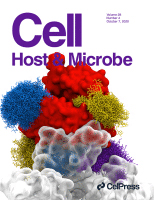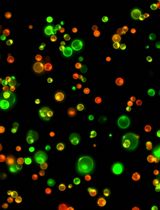- Submit a Protocol
- Receive Our Alerts
- Log in
- /
- Sign up
- My Bio Page
- Edit My Profile
- Change Password
- Log Out
- EN
- EN - English
- CN - 中文
- Protocols
- Articles and Issues
- For Authors
- About
- Become a Reviewer
- EN - English
- CN - 中文
- Home
- Protocols
- Articles and Issues
- For Authors
- About
- Become a Reviewer
Tomato Stem Injection for the Precise Assessment of Ralstonia solanacearum Fitness in Planta
(*contributed equally to this work) Published: Vol 11, Iss 16, Aug 20, 2021 DOI: 10.21769/BioProtoc.4134 Views: 3639
Reviewed by: Akinori KibaFeng LiShweta Panchal

Protocol Collections
Comprehensive collections of detailed, peer-reviewed protocols focusing on specific topics
Related protocols
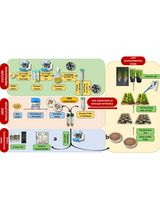
Protocol for Inoculation of PGPR Staphylococcus sciuri to Seeds and Seedlings of Rice and Tomato Plants for Increased Root and Shoot Growth
Girija Somna [...] Dinakar Challabathula
Mar 20, 2025 2042 Views
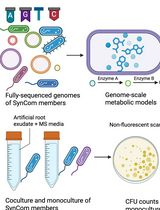
In Silico Prediction and In Vitro Validation of Bacterial Interactions in the Plant Rhizosphere Using a Synthetic Bacterial Community
Arijit Mukherjee [...] Sanjay Swarup
Nov 5, 2025 1555 Views
Abstract
Ralstonia solanacearum is a soil-borne pathogen with worldwide distribution that causes bacterial wilt disease in more than 250 plant species. R. solanacearum invades plants through the roots, reaches the vascular system, and colonizes the whole plant by moving through the xylem, where it eventually replicates rapidly, causing plant death. Usual assays to measure the virulence of R. solanacearum under laboratory conditions rely on soil-drenching inoculation followed by observation and scoring of disease symptoms. Here, we describe a protocol to assess the replication of R. solanacearum following injection into tomato stems. This protocol includes four major steps: 1) growth of tomato plants; 2) R. solanacearum injection into tomato stems; 3) collection of tomato xylem samples and bacterial quantitation; and 4) data analysis and representation. This method bypasses the natural penetration process of the pathogen, thus minimizing variation associated with stochastic events during bacterial invasion, and provides a sensitive and accurate measurement of bacterial fitness inside xylem vessels.
Keywords: Ralstonia solanacearumBackground
Ralstonia solanacearum is the causal agent of bacterial wilt disease in more than 250 plant species including important crops, such as tomato, potato, pepper, and eggplant, among others, and is considered one of the most dangerous plant pathogens in the world (Mansfield et al., 2012). R. solanacearum is a soil-borne pathogen that enters plants through the roots, using wounds, root tips, and secondary root emergence points as penetration sites; it then progresses via the root cortex, finally reaching the vascular system (Xue et al., 2020). In susceptible plants, R. solanacearum moves through the xylem vessels to colonize the whole plant; eventual replication may lead to populations up to 1010 bacteria per gram of plant tissue in diseased plants, which will block water and nutrient flow in the vascular system and eventually cause plant wilting and death (Peeters et al., 2013). Multiple experimental methods to assess R. solanacearum virulence in plants under laboratory conditions have been described previously (Morel et al., 2018). The most widely used assay relies on soil-drenching of plant roots with R. solanacearum suspensions, followed by observation of the resulting wilting symptoms over time (Morel et al., 2018). Other assays involve bypassing the root penetration process by introducing the bacterial suspensions directly into plant tissues (either leaves or stems) and provide more accurate assessments of bacterial replication (Macho et al., 2010; Morel et al., 2018; Yu and Macho, 2021).
In this protocol, we provide a detailed description of a method aimed at quantitating bacterial fitness in tomato xylem vessels by direct injection into the stem using a microsyringe; given the subsequent fast bacterial replication and plant colonization, we assume that a substantial proportion of this inoculum reaches the xylem vessels. At the desired time after inoculation, samples are taken from 2 cm above the inoculation site by collecting xylem sap from an excised stem section. Bacterial quantitation in this xylem sap provides a clean measurement of bacterial fitness in the plant vascular system. Like other Gram-negative bacterial pathogens, R. solanacearum requires a type III secretion system to inject type III effector (T3E) proteins into host cells and cause disease. Since T3E activities often contribute redundantly to the development of disease, it is generally difficult to determine their involvement in virulence; however, we have recently used this method to detect the virulence attenuation of different R. solanacearum knockout mutants lacking individual effectors (Xian et al., 2020; Yu et al., 2020) and to analyze bacterial pathogenicity following chemical treatment of plant tissues (Wang et al., 2021), revealing a simple, versatile, and powerful assay for the study of R. solanacearum-plant interactions.
Materials and Reagents
Microcentrifuge tubes (1.5 ml and 2 ml) (BBI, catalog number: F600620-0001)
Pipette tips
Plastic Petri dishes (90 mm diameter)
Jiffy pots (41 mm diameter) (Jiffy International, Kristiansand, Norway)
Spectrophotometer plastic cuvettes (BRAND, catalog number: 759015)
Syringe filter (0.45 μm) (Millex, Millex®-HV, catalog number: SLHV033RB)
Tomato seeds (Solanum lycopersicum cv. Moneymaker)
Standard potting soil (Pindstrup, catalog number: 1034593214)
Vermiculite (generic)
Distilled sterile water
75% ethanol (Sinopharm Chemical Reagent Co, SCR®, catalog number: 801769610)
Triphenyltetrazolium chloride (TTC) (Sigma-Aldrich, catalog number: T8877-5G)
Glucose (Sinopharm Chemical Reagent Co, SCR®, catalog number: 63005518)
Bacto peptone (BD, catalog number: 211677)
Yeast extract (OXOID, catalog number: LP0021)
Casein hydrolysate (Casamino acids) (Sigma-Aldrich, catalog number: 22090-500G)
Agar (Sinopharm Chemical Reagent Co, SCR®, catalog number: 10000561)
Phi medium (see Recipes)
1% (W/V) TTC solution (see Recipes)
20% (W/V) glucose solution (see Recipes)
Equipment
Micro sample syringe 10 μl (Sangon Biotech, catalog number: E718LD0023)
Sterile scalpel
EasySpiral® Automatic Serial Diluter and Plater (optional) (Interscience, Easysprial®, catalog number: 412000)
Plant growth chamber (Percival, model: I-36VL)
Autoclave (SANYO, model: MLS-3780)
Centrifuge (Eppendorf, model: Centrifuge 5424)
pH meter (Sartorius, model: PB-10)
Petri dish incubator at 28°C (Panasonic, model: MIR-262-PC)
Tube incubator (shaker) at 28°C (Eppendorf, New BrunswickTM, catalog number: m1324-0006)
NanoDrop spectrophotometer (Thermo Scientific, NanoDrop 2000c)
Water distiller/sterilizer (Millipore, model: Milli-Q integral 10L)
Vortex (Scientific Industries, model: Vortex-Genie 2, catalog number: S1-0246)
Software
GraphPad Prism 7 (https://www.graphpad.com/scientific-software/prism/)
Procedure
Growing tomato plants
Germinate tomato seeds (Solanum lycopersicum cv. Moneymaker) in a 1:2 mixture of standard potting soil and vermiculite. Grow seedlings for one week in a growth chamber (25°C, 16 h light/8 h dark photoperiod, 130 mE m-2 s-1, 65% humidity) (Figure 1A).
Soak Jiffy pots thoroughly with tap water without fertilizer (an excess of fertilizer may cause stress to the tomato seedlings) (see Note 1). Transfer tomato seedlings to individual water-soaked jiffy pots containing a pre-packed soil mixture (Figure 1B) (see Note 1). Grow tomato plants in the same growth chamber for another three weeks (Figure 1C) (see Note 2). Approximately 6-8 plants per treatment are recommended to obtain robust results.

Figure 1. Growth of tomato seedlings in Jiffy pots. A. Germination of tomato seeds (Solanum lycopersicum cv. Moneymaker) in a 1:2 mixture of standard potting soil and vermiculite. B. Transferring tomato seedlings to individual water-soaked jiffy pots containing a pre-packed soil mixture. C. Four-week-old tomato plants ready for Ralstonia inoculation.
Preparation of R. solanacearum inoculum
Prepare solid and liquid phi medium (see Recipes) following standard procedures (Yu and Macho, 2021).
Streak out R. solanacearum strains on solid phi medium plates containing TTC and glucose (see Recipes; Yu and Macho, 2021) and prepare a bacterial suspension as previously described (Yu and Macho, 2021).
Dilute the final bacterial suspension in distilled water to an OD600 = 0.1, which corresponds to approximately 108 CFU/ml (Morel et al., 2018). Perform serial dilutions of the bacterial suspension using distilled water to reach 106 CFU/ml in a volume of 1 ml in a sterile 2-ml microcentrifuge tube (see Note 3) (Figure 2). Consider the possibility of testing the virulence of different doses of your specific strains under your specific experimental conditions. Under our conditions, we selected 106 CFU/ml as a suitable concentration to allow gradual but reproducible bacterial replication inside tomato stems during the first 3 days post-inoculation (dpi) without causing the development of necrotic symptoms during the experiment (Figure 3).
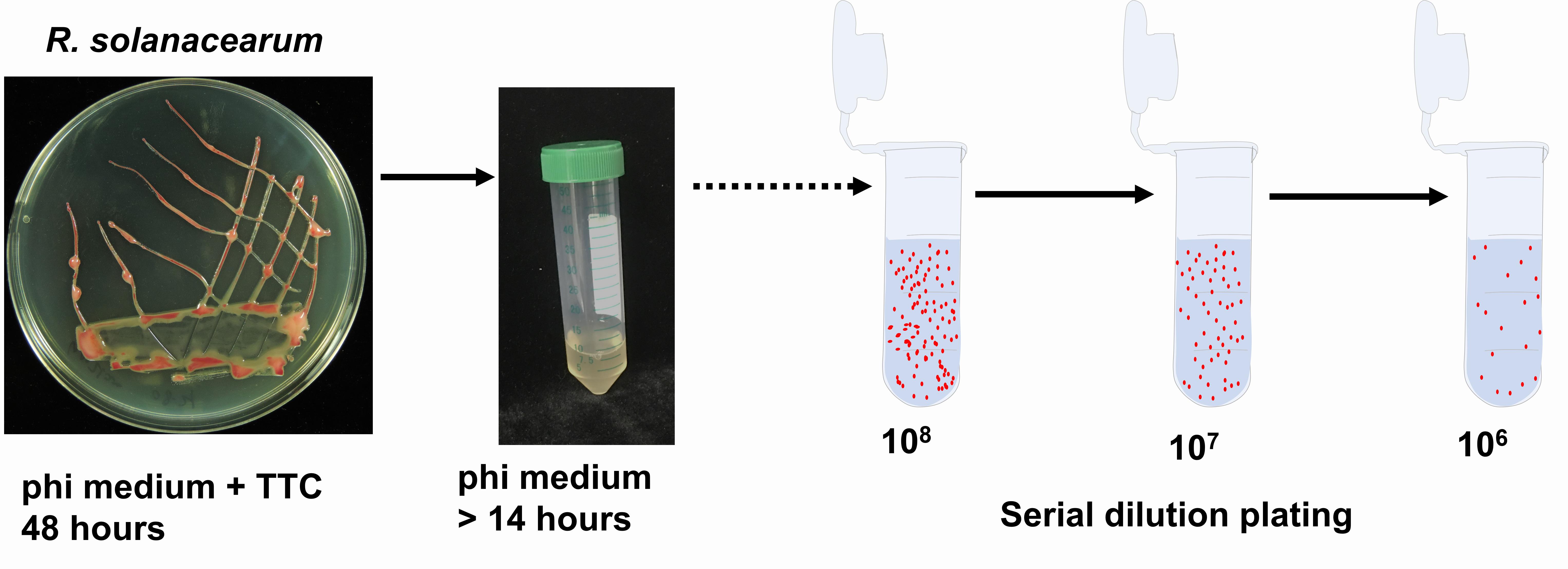
Figure 2. Preparation of R. solanacearum inoculum
Inoculation (stem injection) and sampling of xylem sap
Using a 10-μl microsyringe, inject 5 μl bacterial suspension into the stems of 4-week-old tomato plants (see Note 4). The inoculation site should be approximately 2 cm below the cotyledon emergence site (Figure 3A and 3B). When performing stem injection, use an angle of approximately 30° between the syringe and the stem to facilitate injection of the bacterial suspension.
Place the inoculated tomato plants in a growth chamber (28°C, 12 h light/12 h dark, 130 mE m-2 s-1, 75% humidity) for 36-72 h until subsequent sampling at the appropriate time points.
Transect the stem with a sterile scalpel just below the cotyledon emergence site (Figure 3C).
Using two fingers, gently squeeze the lower part of the tomato stem to allow the xylem sap to emerge and then collect 2.5 μl xylem sap using a 2.5-μl pipette (see Note 5) (Figure 3D).

Figure 3. Stem injection and sampling of xylem sap. A. Four-week-old tomato plants in Jiffy pots. B. Using a 10-μl microsyringe, inject 5 μl bacterial suspension into the stems of 4-week-old tomato plants. C. Transect the tomato stems with a sterile scalpel just below the cotyledon emergence site. D. Collect 2.5 μl xylem sap at the cutting site using a micropipette.
Bacterial quantitation
Dissolve the xylem sap in 1 ml sterile water in a sterile 1.5-ml microcentrifuge tube (Figure 4A).
Dilute and spread bacteria (50 μl) on phi medium plates using standard procedures, as previously described (Yu and Macho, 2021). Spreading can be performed manually using a sterile spreader, plastic beads, or the bottom of a 1.5-ml microcentrifuge tube, or using a spiral plater (Yu and Macho, 2021).
Incubate the plates upright at 28°C for 2 days. Count the colonies and process the data (Figure 4B) (see Note 6).
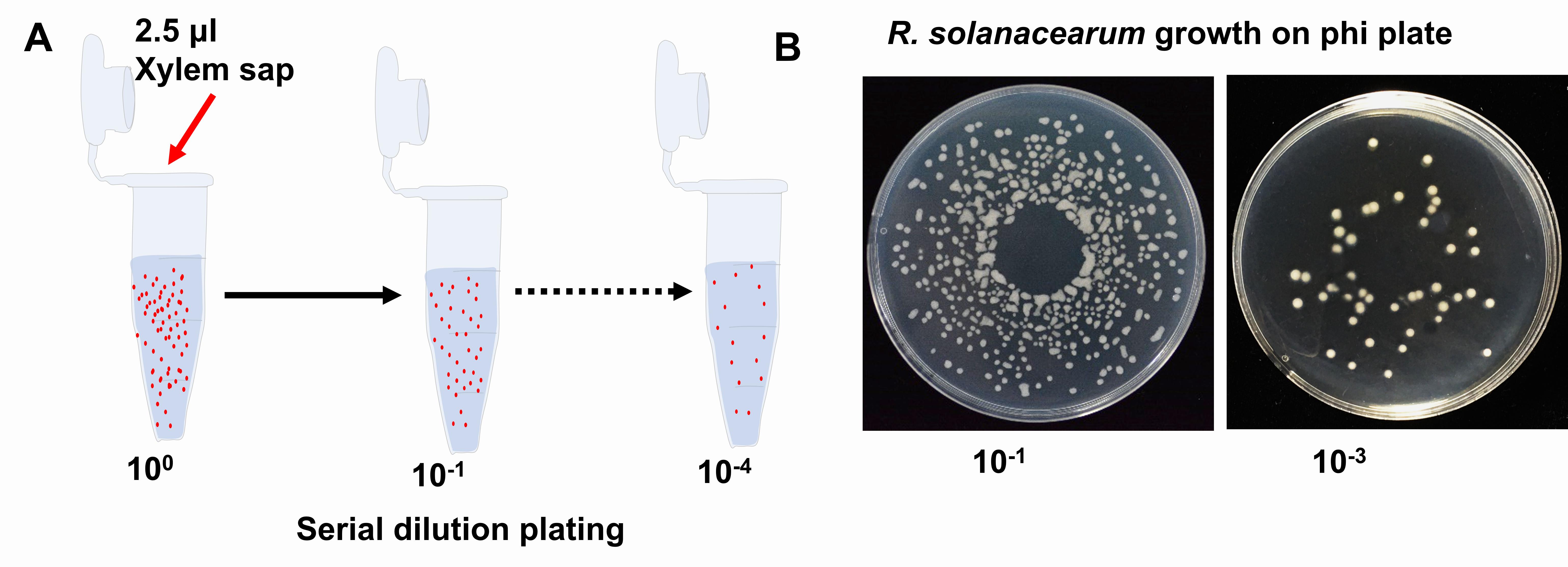
Figure 4. Preparation of serial dilutions and bacterial spreading. A. Dissolve the xylem sap containing Ralstonia in 1 ml sterile water in a sterile 1.5-ml microcentrifuge tube; dilute the suspensions by 10 to 104 times. B. Spread the diluted bacterial suspensions (we tried to spread 10-1 or 10-3) on phi medium plates using standard procedures, as previously described (Yu and Macho, 2021). Incubate the plates upright at 28°C for 2 days and count the colonies on solid phi medium plates. Photos in B show the usual colony pattern after plating using a spiral plater (Yu and Macho, 2021).
Data analysis
Using the number of colonies on each readable plate, calculate bacterial numbers in the sampled xylem sap. If plating was performed manually, apply the following formula:
R. solanacearum numbers in xylem sap (CFU/ml) = colony number × 20 × 103 × 10(dilution factor)/2.5
Note: “Colony number”: number of colonies on the readable plate. “20” corresponds to the result of dividing 1000 μl final diluted bacteria between 50 μl bacterial solution spread on the plate. “103” corresponds to the conversion of CFU/μl to CFU/ml. “2.5” corresponds to the 2.5 μl xylem sap taken as a sample and dissolved in 1 ml water. “10(dilution factor)” corresponds to the additional serial dilution of the xylem sap.
If plating was performed using a spiral plater, follow additional calculations as previously described (Yu and Macho, 2021).
Repeat the experiment at least 3 times. Input the final data to GraphPad Prism 7 or a similar program for statistical analysis. To compare results individually, perform a Student’s t-test and report the mean value, SEM, and P value to indicate the statistical significance of the differences. Results are better displayed using a logarithmic scale and the individual data points together with the mean ± SEM (Figure 5).
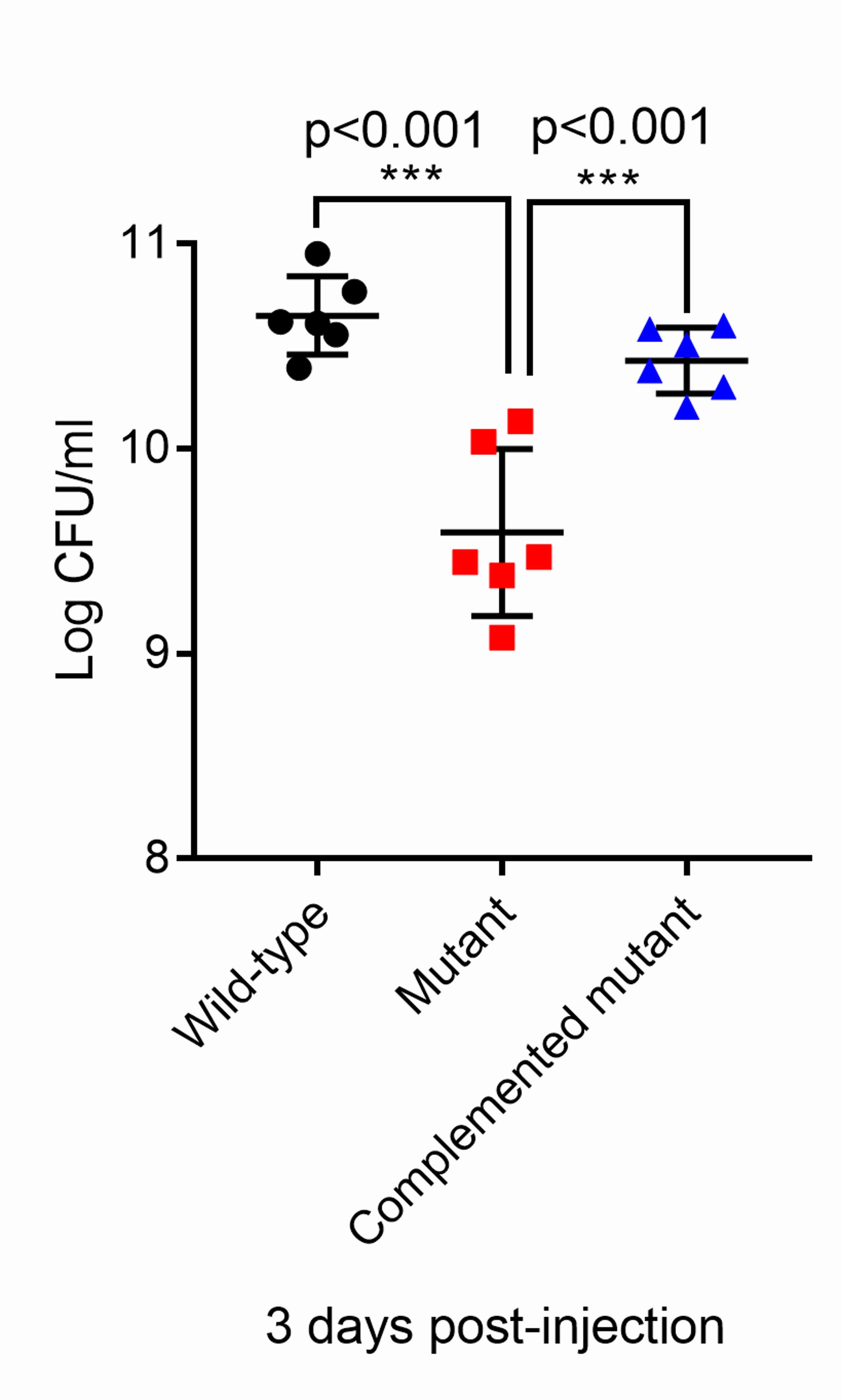
Figure 5. Representation of the growth of R. solanacearum GMI1000 wild-type, mutant, and complemented strain in tomato stems. Different colors represent different strains, and horizontal bars represent mean values (n = 6 plants per strain). Data are represented as the mean ± SEM. Asterisks indicate significant differences (***P < 0.0001, t-test). The graph was plotted using GraphPad Prism 7.
Notes
If the tap water has a high mineral content or contains excessive impurities, purified water can also be used.
Grow no more than 24 tomato plants in each tray (29 × 20 cm), and separate the plants to avoid intertwined roots among individual plants. Water the plants normally once every two days, and keep the jiffy pots wet.
For serial dilution, use a 1:10 dilution for each step.
Optionally, move the tomato plants to a growth chamber (28°C, 12 h light/12 h dark, 130 mE m-2 s-1, 75% humidity) 12 h before R. solanacearum injection to minimize interference caused by changing the growth chamber after inoculation. This does not make a difference under our conditions.
For tomato sampling, remove the oozing sap gently with sterile paper, and clamp the stem top with a finger to push the xylem sap out for sampling.
Waste disposal: Autoclave all the material used in this experiment before disposal to avoid releasing R. solanacearum into the environment. Clean the work bench and flow hood with 75% alcohol after the experiment.
Recipes
Phi medium
10 g Bacto peptone
1 g Yeast extract
1 g Casamino acids
Add water to reach 1 L. To prepare solid medium, add 15 g agar to 1 L medium and autoclave.
1% (W/V) TTC solution
Dissolve TTC in distilled water
Note: Store 1% TTC solution at room temperature or 4°C in a dark environment.
20% (W/V) glucose solution
Glucose should be dissolved in distilled water and autoclaved. Store at 4°C.
Note: Add 1% TTC and 20% glucose when preparing solid Phi medium plates to induce pink R. solanacearum colonies.
Acknowledgments
We thank Xinyu Jian for technical and administrative assistance during this work, in addition to all the members of the Macho laboratory for the constant improvement of this protocol and helpful discussions. Work in the Macho laboratory is supported by the Strategic Priority Research Program of the Chinese Academy of Sciences (grant XDB27040204), the Chinese 1000 Talents Program, and the Shanghai Center for Plant Stress Biology (Chinese Academy of Sciences).
Competing interests
The authors have no competing interests to declare.
References
- Macho, A. P., Guidot, A., Barberis, P., Beuzon, C. R. and Genin, S. (2010). A competitive index assay identifies several Ralstonia solanacearum type III effector mutant strains with reduced fitness in host plants. Mol Plant Microbe Interact 23(9): 1197-1205.
- Mansfield, J., Genin, S., Magori, S., Citovsky, V., Sriariyanum, M., Ronald, P., Dow, M., Verdier, V., Beer, S. V., Machado, M. A., Toth, I., Salmond, G. and Foster, G. D. (2012). Top 10 plant pathogenic bacteria in molecular plant pathology. Mol Plant Pathol 13(6): 614-629.
- Morel, A., Peeters, N., Vailleau, F., Barberis, P., Jiang, G., Berthome, R. and Guidot, A. (2018). Plant Pathogenicity Phenotyping of Ralstonia solanacearum Strains. Methods Mol Biol 1734: 223-239.
- Peeters, N., Guidot, A., Vailleau, F. and Valls, M. (2013). Ralstonia solanacearum, a widespread bacterial plant pathogen in the post-genomic era. Mol Plant Pathol 14(7): 651-662.
- Wang, Y., Zhao, A., Morcillo, R.J.L., Yu, G., Xue, H., Rufian, J.S., Sang, Y., and Macho, A.P. (2021) A bacterial effector uncovers a novel pathway involved in tolerance to bacterial wilt disease. Molecular Plant 30:S1674-2052(21)00159-3.
- Xian, L., Yu, G., Wei, Y., Rufian, J. S., Li, Y., Zhuang, H., Xue, H., Morcillo, R. J. L. and Macho, A. P. (2020). A Bacterial Effector Protein Hijacks Plant Metabolism to Support Pathogen Nutrition. Cell Host Microbe 28(4): 548-557 e547.
- Xue, H., Lozano-Durán, R., and Macho, A.P. (2020). Insights into the root invasion by the plant pathogenic bacterium Ralstonia solanacearum. Plants (Basel) 9(4): 516.
- Yu, G., Xian, L., Xue, H., Yu, W., Rufian, J. S., Sang, Y., Morcillo, R. J. L., Wang, Y. and Macho, A. P. (2020). A bacterial effector protein prevents MAPK-mediated phosphorylation of SGT1 to suppress plant immunity. PLoS Pathog 16(9): e1008933.
- Yu, W. and Macho, A. P. (2021). A fast and easy method to study Ralstonia solanacearum virulence upon transient gene expression or gene silencing in Nicotiana benthamiana leaves. Bio-protocol 11(15): e4116.
Article Information
Copyright
© 2021 The Authors; exclusive licensee Bio-protocol LLC.
How to cite
Wang, Y., Xian, L., Yu, G. and Macho, A. P. (2021). Tomato Stem Injection for the Precise Assessment of Ralstonia solanacearum Fitness in Planta. Bio-protocol 11(16): e4134. DOI: 10.21769/BioProtoc.4134.
Category
Plant Science > Plant physiology > Biotic stress
Microbiology > Microbe-host interactions > Bacterium
Biological Sciences > Biological techniques > Microbiology techniques
Do you have any questions about this protocol?
Post your question to gather feedback from the community. We will also invite the authors of this article to respond.
Share
Bluesky
X
Copy link



